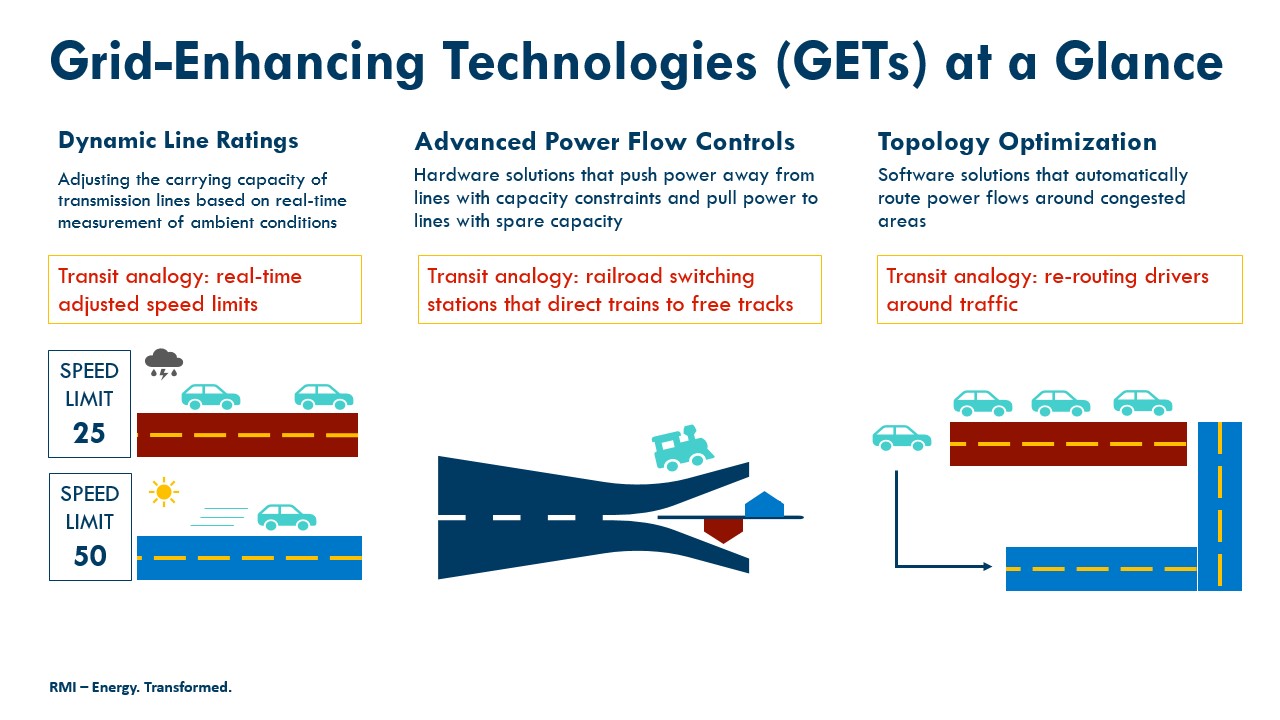
Cheaper, Cleaner, Faster
Four strategies utility regulators can use to accelerate new renewables interconnection.
The Inflation Reduction Act is poised to greatly accelerate the decarbonization of the US economy and improve the cost-effectiveness of carbon-free electricity. Realizing this potential will depend on electrifying transportation, heating and cooling appliances, and other end uses, while also rapidly building out renewable generation capacity to meet the new demand.
Fortunately, the United States is incredibly rich in solar and wind resources, particularly in regions like the Southwest and upper Midwest. However, we need much more transmission capacity to get the power generated from those resources to major population centers, while also accommodating load growth from electrification. Unfortunately, right now building new transmission lines quickly in the United States is very difficult, taking over 10 years on average.
Insufficient transmission capacity is already a major bottleneck to bringing new clean resources on line. In 2022, 95 percent of the 2,000 GW of new capacity seeking to interconnect to the grid consisted of zero-carbon resources like renewables and batteries — but if current trends hold, most of these resources will never come on line. Proposed projects are languishing in interconnection queues nearly twice as long today as they did in 2015, and most are eventually withdrawn.

Addressing interconnection-queue backlogs will ultimately require more transmission infrastructure. In the near term, grid-enhancing technologies (GETs) can maximize the capacity of the existing transmission system while we wait for new lines to be built.
What are GETs?
GETs are innovative technologies that act as energy efficiency solutions for the grid. They can adjust line ratings to reflect real-time conditions, re-route power around congested areas, and optimize power flows.

GETs help grid operators take advantage of underutilized transmission capacity, enabling more renewable projects to connect to the existing system and reducing the curtailment of wind and solar generation.
In contrast to new transmission lines, GETs can often be installed quickly. GETs are also remarkably cost-effective, in some cases having payback periods well under a year.
Despite Their Merits, Utilities Rarely Install GETs
Despite being proven technologies, GETs are not widely used in the United States today. A growing number of investigations by utilities, regional transmission organizations (RTOs), the Department of Energy, and the Federal Energy Regulatory Commission (FERC) are exploring GETs, but such efforts have not yet moved these tools into the mainstream.
Why have these promising technologies had such limited uptake? Two of the key barriers are:
Lack of experience. Though GETs are not new, they are relatively recent innovations — and transmission owners tend to be cautious about implementing changes to how their system operates. It can be challenging to encourage rapid adoption of new technologies by actors that are risk averse.
Perverse incentives. The regulated utilities that own transmission lines are compensated under a formula that ties profits to capital expenditures. This means they can increase profits by building more expensive systems than necessary (a perverse incentive referred to as gold plating) and by prioritizing capital expenditures over operating expenses (one known as capex bias). Since GETs tend to be cheap, the gold plating incentive discourages their adoption. Meanwhile, capex bias disadvantages GETs that can provide operational efficiencies, since these may avoid or delay the need for capital expenditures.
Fortunately, these challenges are not insurmountable. In particular, the public utility commissions (PUCs) that oversee regulated utilities at the state level are well positioned to take action, given the ratepayer-friendly nature of GETs as affordable transmission solutions.
Public Utility Commissions Can Accelerate GETs Deployment
State regulators have many opportunities to accelerate GETs uptake, even where they do not have full control over transmission planning. The most effective engagement approach will depend on their political and regulatory context.
For a PUC in a state that is part of an RTO (or independent system operator), the best strategy will likely involve influencing that organization. Where the state has its own RTO (New York, Texas, and California), a PUC can work either with the RTO directly or with other state-level policymakers who can influence it.
In states where the PUC itself oversees transmission planning, it can take more direct actions to accelerate GETs deployment. All PUCs can also support GETs at the national level by engaging in FERC’s regulatory processes.
Below, we describe four specific strategies PUCs can use to speed GETs deployment and promote the most efficient use of the existing transmission system.
Strategy #1: Build Knowledge and Experience with GETs
In some jurisdictions, utilities and stakeholders may be unfamiliar with GETs or may not trust that they will work as well as traditional solutions. In these cases, PUCs can help build the knowledge and experience necessary for successful deployment.
PUCs have the ability to open an investigative proceeding into GETs, require their jurisdictional utilities to conduct a cost-benefit analysis of adding different GETs portfolios to their transmission networks, or — if part of an RTO — push for a regional study or cost-benefit analysis of the technologies. A PUC could also create a utility-stakeholder working group to explore options for GETs deployment or encourage its state energy office to do so. Finally, PUCs can share best practices with each other through forums such as the National Association of Regulatory Utility Commissioners and seek opportunities for interregional collaboration to spur GETs adoption.
Strategy #2: Require that GETs Be Considered in Planning Processes
Today GETs are not routinely considered during transmission planning and interconnection processes, a missed opportunity that can lead to more costly integration of new resources.
In a non-RTO state, the PUC can mandate that utilities consider GETs in the planning process. This could be a stand-alone reform or part of a broader effort to improve the resource planning process.
Elsewhere, PUCs can advocate for changes to RTO planning processes. For instance, PUCs could push for GETs to be incorporated in regional interconnection studies as a way of controlling the rising network upgrade costs that new resources are increasingly facing.
PUCs can exert substantial leverage in RTO proceedings when they engage, such as by working through a multi-state association (e.g., the Organization of PJM States, the Organization of MISO States). A PUC in an RTO state that has identified particular GETs upgrades as important to a state policy goal (e.g., cost-effective procurement of renewable generation to meet a Renewable Portfolio Standard goal) could also discuss the possibility of its state funding part of the cost of those upgrades with the RTO.
Strategy #3: Incentivize GETs Adoption
As discussed previously, the perverse incentives created by traditional utility regulation hinder GETs adoption. PUCs can encourage GETs deployment through reforms that address these perverse incentives, either directly or by advocating for changes within their RTO.
One option is to create a performance incentive mechanism (PIM) to encourage GETs deployment. A PIM can help counteract the perverse incentives by rewarding the utility financially for installing GETs on its system (and/or penalizing it for failing to take advantage of opportunities to deploy cost-effective GETs). A shared savings mechanism (SSM) may be a particularly attractive design because it rewards the utility for cost-saving solutions.
PUCs can also adopt reforms that remove the perverse incentives themselves — for example, through a multiyear rate plan with a revenue cap (to address gold plating) or totex ratemaking (to address capex bias).
Strategy #4: Shape FERC Policies
PUCs in both RTO and non-RTO states can engage in FERC proceedings to advocate for rules to enhance GETs uptake, such as the creation of an independent transmission monitor to ensure GETs are considered during RTO planning processes. Recent examples of FERC proceedings focused on transmission planning and incentives include Docket Nos. AD22-8-000, RM21-17, and RM20-10-000. In such proceedings PUCs can file comments, participate in workshops, and otherwise push for rules that prioritize full system utilization and efficiency.
How the rules are interpreted and enacted also matters. PUCs in non-RTO states can set good examples by implementing FERC rules in ways that prioritize expeditious GETs deployment, and those in RTO states can engage their RTOs to do the same.
GETs hold great potential for accelerating decarbonization and limiting electricity system costs. These strategies provide some initial ideas for how PUCs can leverage their substantial power to encourage more widespread use of these promising transmission innovations.